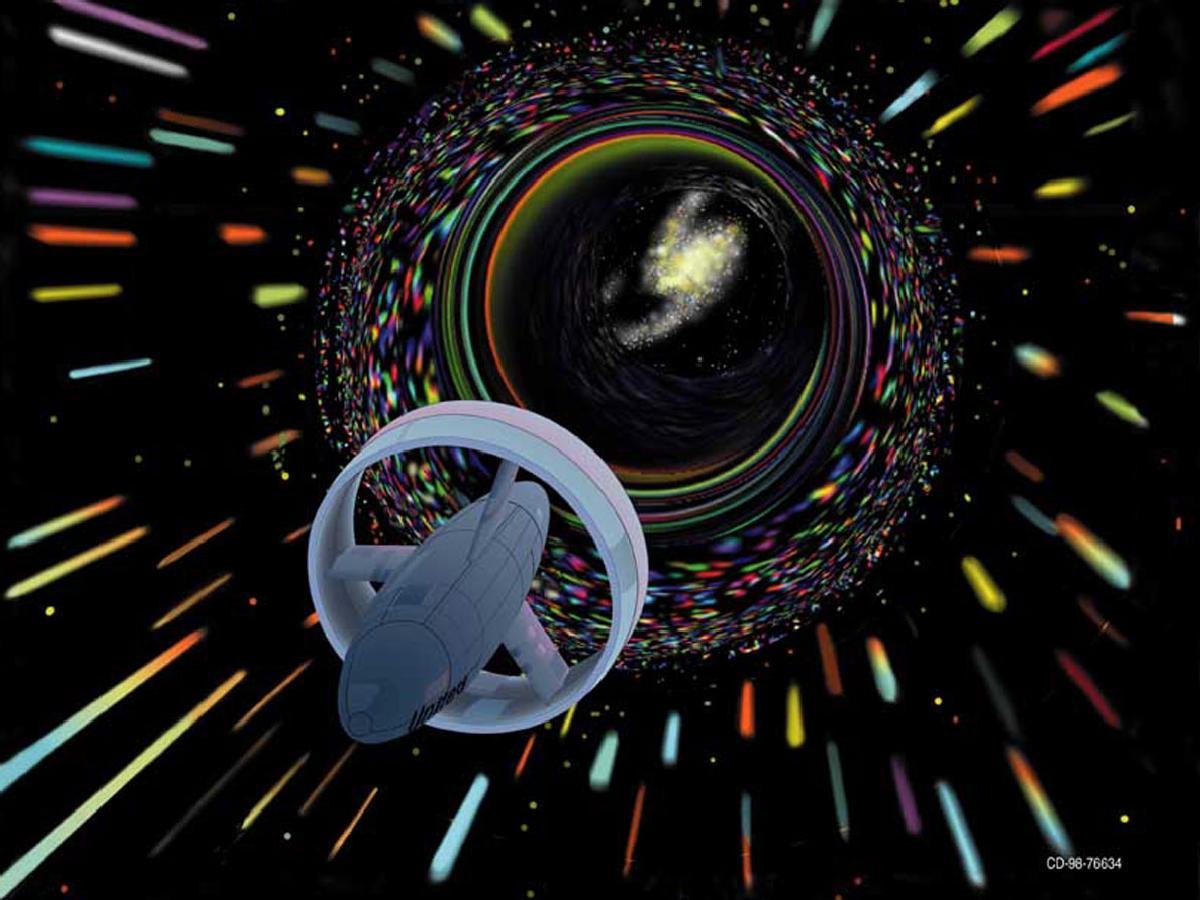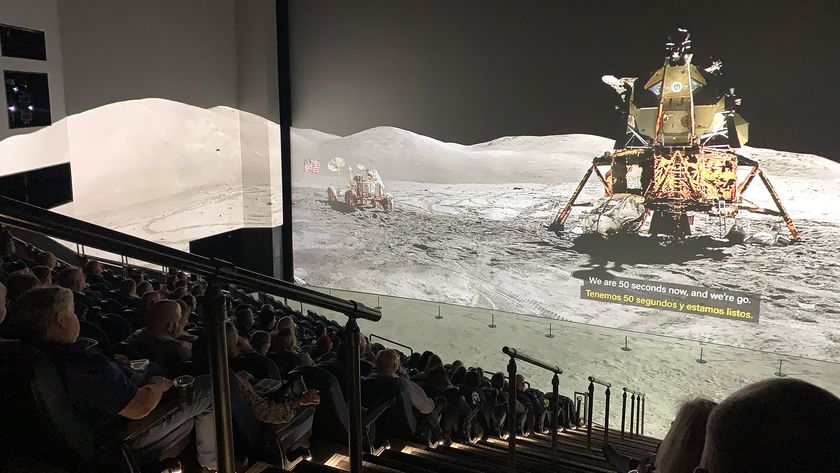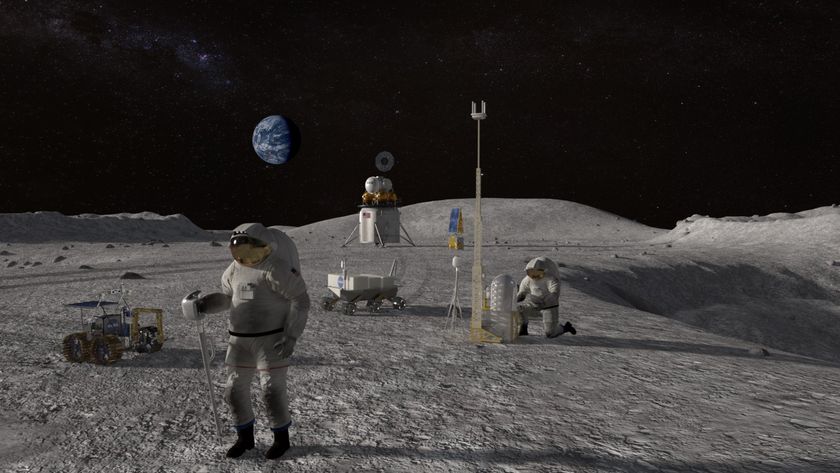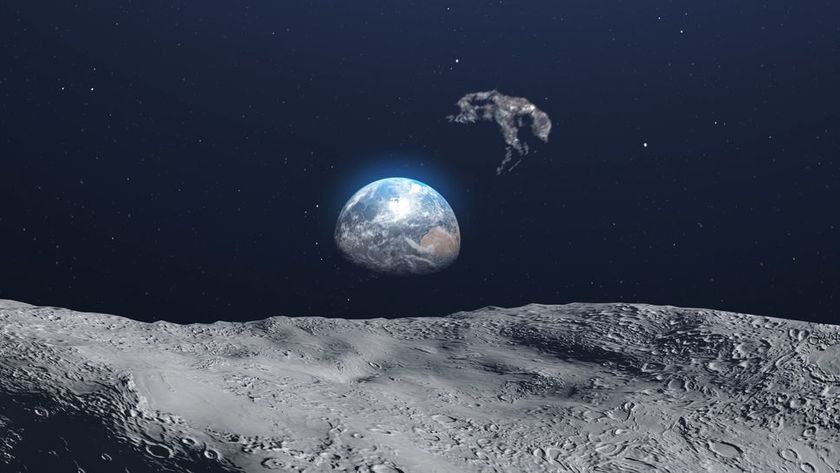NASA's 100-Year Starship Project Sets Sights on Interstellar Travel

Shooting for the stars will first require a lot of down-to-Earth elbow grease, as NASA's new 100-Year Starship project illustrates. The effort, to journey between stars in the 2100s, began with a workshop and now is in the study phase.
NASA's Ames Research Center and the Defense Advanced Research Projects Agency (DARPA) are collaborating on the $1 million 100-Year Starship Study, an effort to take the first step in the next era of space exploration.
The study will scrutinize the business model needed to develop and mature technologies needed to enable long-haul human space treks a century from now. Kick-started by a strategic planning workshop in January, the project has brought together more than two dozen farsighted futurists, NASA specialists, science fiction writers, foundation aficionados and educators.
But for the moment, put aside all those Vulcan mind melds and get a grip. Launching a truly interstellar human voyage is a goal that will require sustained investments of intellectual and financial capital from a variety of sources.
"The year-long study aims to develop a construct that will incentivize and facilitate private co-investment to ensure continuity of the lengthy technological time horizon needed," according to DARPA thinkers.
Self-sustaining enterprise
Dave Neyland, director of DARPA’s Tactical Technology Office, said that the 100-Year Starship name was chosen because it would require a long-range sustainable effort to get our species to other stars.
Get the Space.com Newsletter
Breaking space news, the latest updates on rocket launches, skywatching events and more!
"Looking at history, most significant exploration, like crossing oceans or continents for the first time, was sponsored by patrons or groups outside of government," Neyland said in a DARPA statement. [Video: Warp Drive and Wormholes]
Neyland said that the focus of the endeavor is to identify a mechanism that gets such a long-range project "out of the government, and make sure it is an energized and self-sustaining enterprise."
The mission of the workshop was to steer efforts to develop a business model, establish a charter and develop the organizational construct needed to affect a long-term strategy. Over the course of two days, participants met and thrashed out the requirements for seeding research that would enable interstellar flight. Planning is underway for follow on-activities, with the study scheduled for completion by the end of 2011.
The long-haul starship plan
One participant in the workshop was former NASA scientist Marc Millis, a leading authority on breakthrough propulsion physics concepts that might make interstellar hops a doable proposition.
"The meeting and the DARPA funding is about creating an organization that could last for 100-years, rather than about the technological and sociological advancements necessary toeventually create starships," Millis said. "In fact, the funding is not allowed to be spent on any research or educational activities related to interstellar flight, but instead can only be used to define that organization. As much as I really like the name, '100-year starship,' this study should instead be called the '100-year organization study.'"
Millis pointed out that the overall goal of the organization is to sustain research that will lead to the creation of a starship in roughly 100-years, and to inspire students along the way. By asking “why-what-how,” it was hoped to flesh out some substance to define that organization, he said.
An interstellar challenge
"I find this new initiative to be more of a self-serving earmark using good-old-boy networking," Millis told SPACE.com of the study.
He said leaders of the new study need to first consider what other organizations have done in the past and are now accomplishing, such as the Tau Zero Foundation, the British Interplanetary Society and The Planetary Society.
Millis said that, as head of the Tau Zero Foundation, he picked the topic of interstellar flight "to seek game-changing advancements beyond what others even contemplate and to operate beyond the entrapments of all the competition and legacy constraints of nearer-Earth space activities. And now those entrapments are encroaching into the progress being made on interstellar flight."
"I challenge DARPA/Ames to a fair and open competition," Millis said. "If given the same amount of funding, labor, and time, let’s see who can make more progress toward the real challenges of interstellar flight!" [Vote: The Greatest Space Innovators of the 21st Century]
Unforeseen breakthroughs
Another workshop attendee was Harry Kloor, an author, scientist and science technology consultant whose has written for "Star Trek: Voyager." Kloor said there should be no rush for the project, but that its aim should be true.
"There are a lot of steps between now and then," Kloor told SPACE.com. "Nobody came forward with the idea that we won’t be trying to reach for the stars. If you don’t aim for it, how are you ever going to hit the target?"
Kloor’s crystal ball calls for unforeseen breakthroughs … be they in medicine, communications, lifespan extension, radiation survival, data transport, even energy generation.
"Also, I’m banking on within five years, 10 years at the most, that we will find nearby, say within 20 light-years, an Earth-like planet."
Given such an eye-opening discovery, Kloor said that public consciousness will change. By finding such a nearby habitable world, humanity could then start to envisage the feasibility of a stellar trek.
"It will be the same as when people were imagining what’s on the other side of our world," Kloor said.
Kloor considers interstellar space travel a necessity.
"If we don’t eventually spread out – I’m not saying tomorrow or even 100 years – but if we don’t get off planet it is inevitable that we would go extinct, just like the dinosaurs," Kloor said. "Either a natural or unnatural event will occur that will wipe us out."
In terms of the recent 100-Year Starship study strategic planning workshop, Kloor saw the gathering as laying the seeds of future efforts that could lead to something.
"The point of the workshop," Kloor concluded, "was to start the conversation moving forward."
Leonard David has been reporting on the space industry for more than five decades. He is past editor-in-chief of the National Space Society's Ad Astra and Space World magazines and has written for SPACE.com since 1999.
Join our Space Forums to keep talking space on the latest missions, night sky and more! And if you have a news tip, correction or comment, let us know at: community@space.com.

Leonard David is an award-winning space journalist who has been reporting on space activities for more than 50 years. Currently writing as Space.com's Space Insider Columnist among his other projects, Leonard has authored numerous books on space exploration, Mars missions and more, with his latest being "Moon Rush: The New Space Race" published in 2019 by National Geographic. He also wrote "Mars: Our Future on the Red Planet" released in 2016 by National Geographic. Leonard has served as a correspondent for SpaceNews, Scientific American and Aerospace America for the AIAA. He has received many awards, including the first Ordway Award for Sustained Excellence in Spaceflight History in 2015 at the AAS Wernher von Braun Memorial Symposium. You can find out Leonard's latest project at his website and on Twitter.


